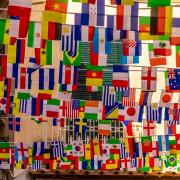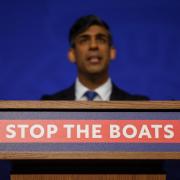
Save the date- International Women’s Day is almost here, on Sunday the 8th March. This year’s theme? #Eachforequal, and the motto ‘an equal world is an enabled world’ aiming to celebrate the past and present achievements of women around the globe. The campaign theme is drawn from the notion of ‘collective individualism’ and marks a call to action in accelerating gender equality. There’s still a long way to go- but while in 1911 over one million women took part in IWD events, today there are millions more worldwide, participating in school and business events, speeches, rallies, and celebrating it as a public holiday in countries like Ukraine, Russia, and Armenia.
It began with a march of 15,000 female workers in 1908 New York demanding voting rights, better pay, and shorter working hours. From there, the first ‘National Woman’s Day’ was held, on February 28th 1909, organised by the Socialist party of America, and the first ever official ‘International Women’s Day’ followed, on March 19th 1911. Over a century ago! The inaugural event involved rallies and meetings, and commemorated the date where the King of Prussia had promised to introduce votes for women in 1848 (which, sadly, he didn’t keep). As a result, the day was moved to March 8th in 1913, attracting more and more participants every year. However it wasn’t recognised by the UN until 1975, when an international women’s YEAR was called for- but member states were then invited to proclaim March 8th as the official day for Women’s Rights and International Peace in 1977. Finally!
Its aim: to help eliminate the growing gender inequality in global development, and end discrimination. For good. What could be more vital than that? And the statistics agree- back in 2018, according to investigations by The Independent, men in the UK earned on average 9% more than women, more than 137,000 girls in Britain missed school due to inability to afford sanitary products, and closing the UK’s gender pay gap in that year alone would have resulted in a collective wage increase for women of over £90 billion. And all this just in the UK; globally, only 23% of politicians were women, women made up 64% of the global illiterate population, and men brought home on average a salary 75% greater than that of their female counterparts. These statistics angered and infuriated me too- but how have things changed since? Have the last two years brought hope and progress now there is so much more awareness about inequality?
Well, according to the Global Gender Gap report for 2020, gender parity won’t be attained for a shocking 99.5 years. In education, however, it is estimated that parity can be reached within a more promising 12 years. Another 95 years will pass until global political representation achieves gender equality, and a staggering 257 years until economic participation is equal for men and women, although the ‘role model effect’ has generated increased numbers of women in senior managerial roles and in the labour market worldwide. Political empowerment is on the rise- this, at least, shows promise. Providing women with more job opportunities, helping development in the lowest-scoring countries, and removing stigmas and stereotypes has never been more key!
So how can we help?
Many UK schools already celebrate International Women’s Day through fundraising events, debates, themed bake sales, and more- and you can purchase an action pack on the website. There are also details of hundreds of talks and events to attend near you which you can research using the event search tool. Every year, our school aims to up the effort to continue the message and importance of women’s empowerment way after the event is over, not only because the data proves that there is so much left to do, but also because we as women are capable of so much- so let’s sprinkle a little girl power this IWD! Find out more by visiting https://www.internationalwomensday.com/
By Caroline Young


























